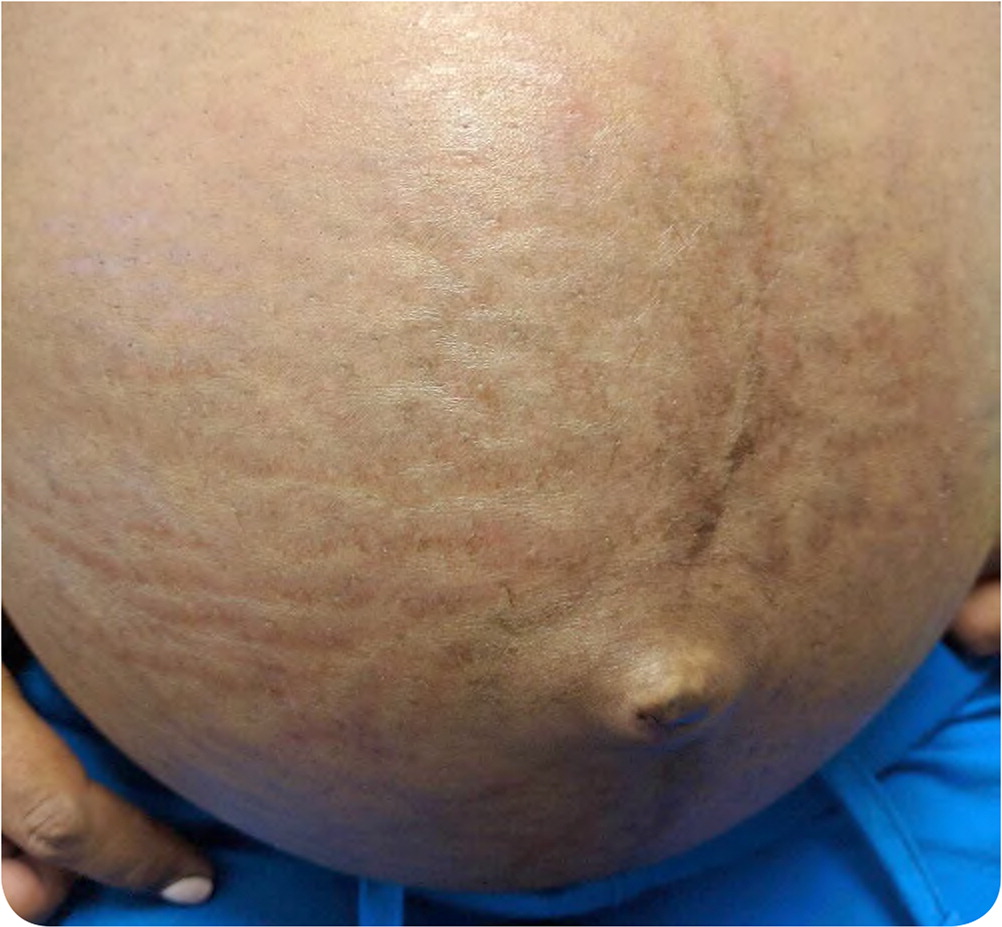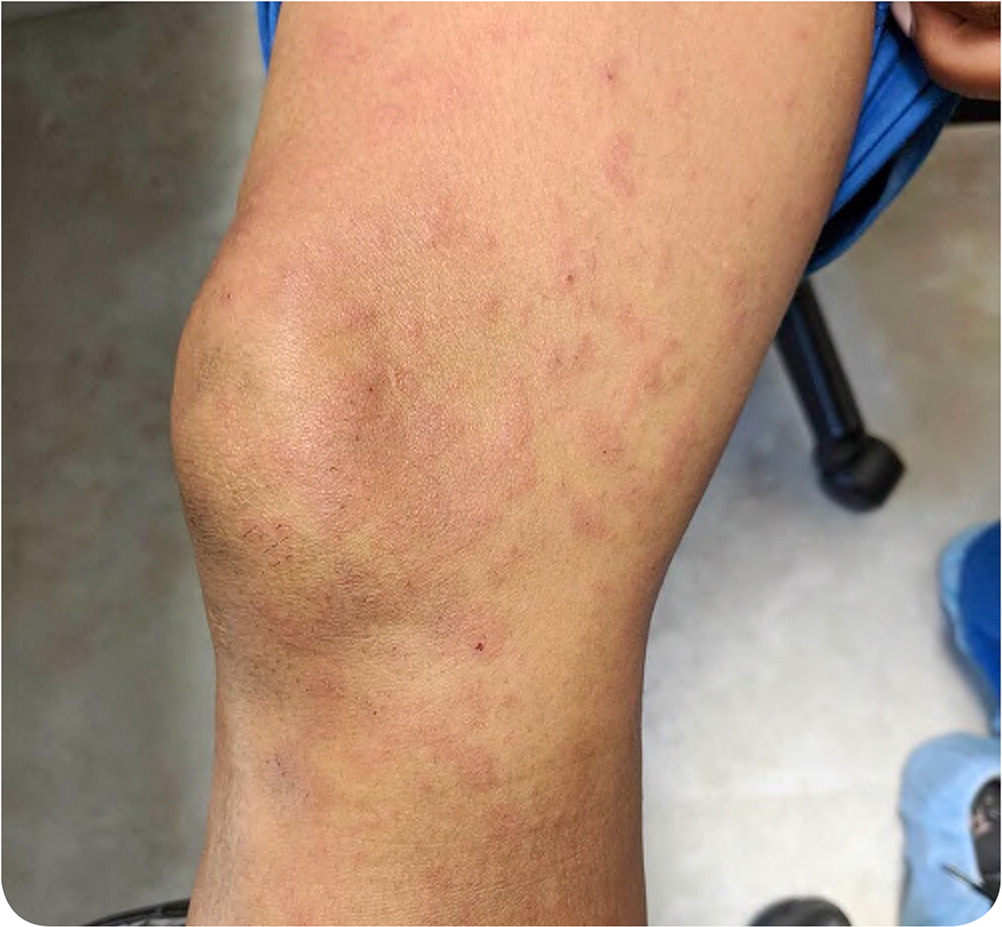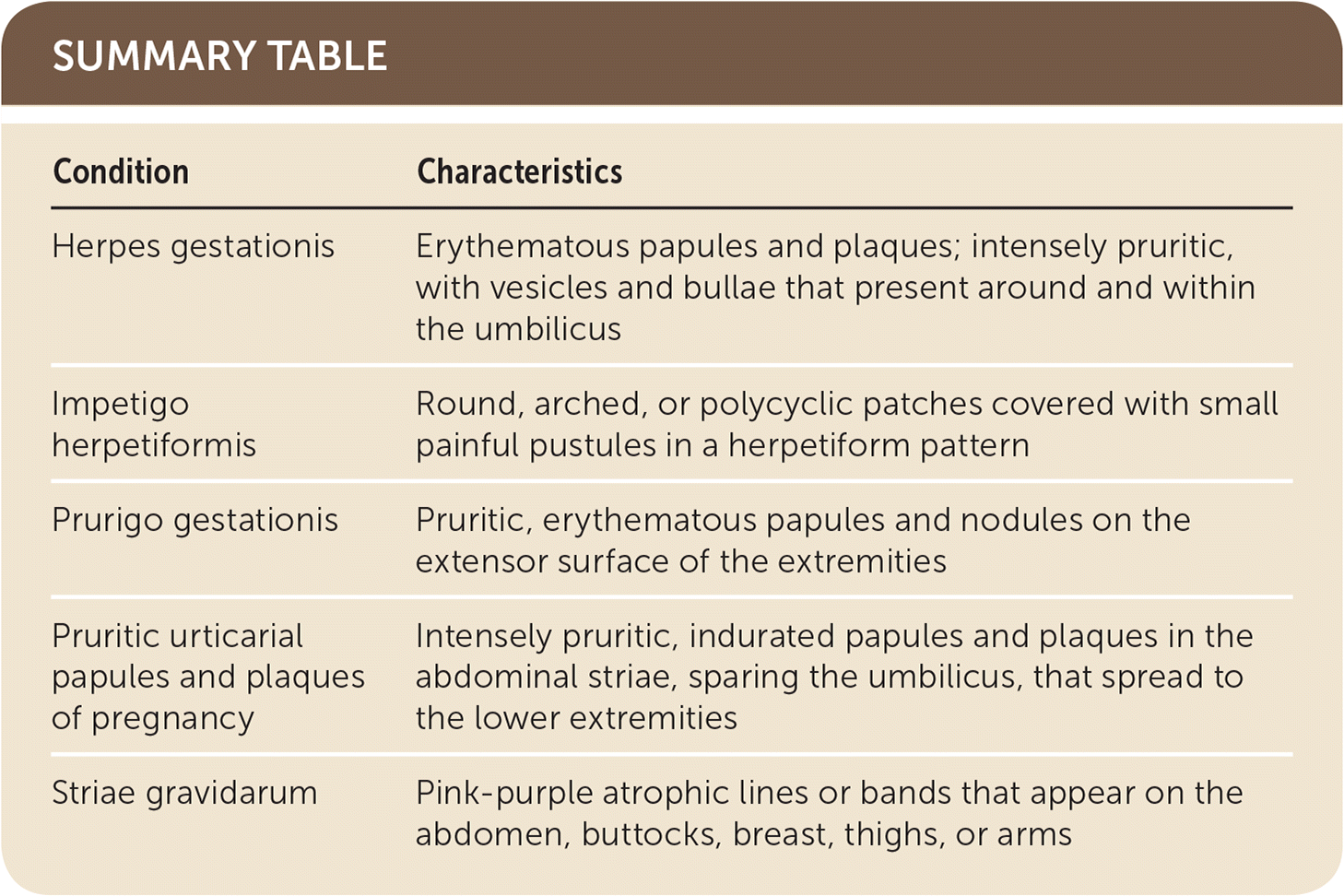
Am Fam Physician. 2018;98(12):749-750
Author disclosure: No relevant financial affiliations.
A 28-year-old pregnant woman (gravida 1) presented with a severely pruritic rash at 36 weeks’ gestation. The rash began periumbilically one week prior and spread to her chest, back, arms, legs, hands, and feet.
The patient reported gaining 38 lb (17 kg) during her pregnancy. In week 26, she was diagnosed with gestational diabetes mellitus, which was adequately controlled with dietary modification.


Question
Discussion
The answer is D: PUPPP. This is a common hive-like cutaneous complication of pregnancy. It is characterized by intensely pruritic, indurated papules and plaques that classically appear first in the abdominal striae, sparing the umbilicus, and eventually spreading to the lower extremities. PUPPP is the most common pregnancy-related dermatosis, occurring in one out of 130 to 200 pregnancies.1,2 The clinical course begins in the third trimester of pregnancy and usually resolves within one to two weeks postpartum. It is not associated with adverse pregnancy outcomes. The condition is more common in a first pregnancy for unknown reasons and in multiple gestations, most likely because of larger abdominal size.1
The etiology of PUPPP is unknown, but damage to connective tissue within the striae of the abdominal wall may have a role.3 There is an association between abdominal size and the development of PUPPP, including significantly increased maternal weight gain and newborn birth weight in women who develop the condition.2
PUPPP is a clinical diagnosis. Treatment includes symptomatic relief using antipruritic agents, emollients, and topical corticosteroids. Severe cases that do not respond to topical treatment may require an oral corticosteroid taper. Patients taking oral corticosteroids must be observed closely for systemic adverse effects, such as hyperglycemia in the mother, intrauterine growth restriction, and neonatal sepsis.4
Herpes gestationis is associated with increased maternal morbidity and fetal morbidity and mortality. It can be distinguished from PUPPP by the characteristic targetoid vesicles and bullae that favor the umbilicus. In contrast to PUPPP, which begins in the striae, herpes gestationis begins around and within the umbilicus and can spread to the extremities.
Impetigo herpetiformis presents as round, arched, or polycyclic patches covered with small painful pustules in a herpetiform pattern. Because the clinical presentation is consistent with pustular psoriasis, it is also known as pustular psoriasis of pregnancy.5
Prurigo gestationis is a benign pruritic rash of unknown etiology. It presents as erythematous papules and nodules on the extensor surface of the extremities and typically resolves after delivery.6
Striae gravidarum, or stretch marks, are the pink to violaceous, atrophic lines or bands that appear on the abdomen, buttocks, breast, thighs, or arms during pregnancy. Up to 90% of pregnant women are affected.1

| Condition | Characteristics |
|---|---|
| Herpes gestationis | Erythematous papules and plaques; intensely pruritic, with vesicles and bullae that present around and within the umbilicus |
| Impetigo herpetiformis | Round, arched, or polycyclic patches covered with small painful pustules in a herpetiform pattern |
| Prurigo gestationis | Pruritic, erythematous papules and nodules on the extensor surface of the extremities |
| Pruritic urticarial papules and plaques of pregnancy | Intensely pruritic, indurated papules and plaques in the abdominal striae, sparing the umbilicus, that spread to the lower extremities |
| Striae gravidarum | Pink-purple atrophic lines or bands that appear on the abdomen, buttocks, breast, thighs, or arms |
